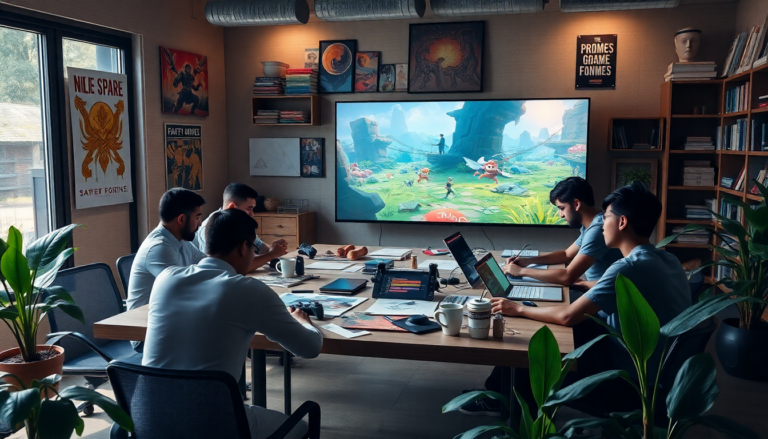Argomenti trattati
The gaming landscape is undergoing a seismic shift, and it’s thrilling to see how indie developers are no longer just the underdogs in the industry. With a wave of cutting-edge tools and techniques that were once exclusive to AAA studios now accessible to smaller teams, the barriers to creating innovative games are crumbling. Imagine a world where a handful of passionate developers can craft experiences that rival those from big-budget studios. In 2025, the lines are increasingly blurred, and the future looks bright for creativity and innovation.
Procedural generation 2.0: beyond random landscapes
Procedural generation has always been a buzzword in game design but in 2025, it has taken a giant leap forward. Gone are the days when procedural methods were limited to creating random terrains. Now, indie developers can tap into advanced mathematical algorithms that not only generate vast landscapes but also intricate narratives and character interactions. I remember the first time I stumbled upon a game that used procedural generation to create a living world. It felt like magic! And now, indie teams can achieve similar feats with open-source tools that allow them to construct immersive and meaningful game environments, all while working with modest resources.
Real-time global illumination for enhanced visuals
Lighting has always been a major differentiator between AAA titles and indie games. However, 2025 marks a pivotal moment where real-time global illumination techniques are becoming available to all developers, regardless of budget. This modern approach doesn’t demand high-end hardware, which means indie creators can now craft stunning atmospheres that were previously the domain of blockbuster films only. Picture this: you’re controlling a character in a beautifully lit environment that reacts to your movements with a realism that pulls you deeper into the game. It’s a game-changer, literally!
AI-enhanced development workflows
Artificial intelligence is revolutionizing the way games are developed. In 2025, large studios are leveraging machine learning to optimize workflows, manage NPC behaviors, and automate testing. But what about indie developers? Well, they too can harness the power of AI at a fraction of the cost. By integrating AI tools into their character creation and quality assurance processes, indie teams can achieve remarkable results without needing an army of developers. Personally, I think this is where the future lies—small teams using AI to free up creative time and focus on what they do best: storytelling and innovation.
Cross-platform development frameworks
In an age where gamers expect to play across multiple platforms seamlessly, indie developers have an incredible opportunity. Thanks to advances in development frameworks, it’s now possible to create games for consoles, PCs, and mobile devices without rewriting entire codebases. Imagine the efficiency of developing one version of your game that works everywhere. It’s like having your cake and eating it too! This not only lowers development costs but also increases market reach. This trend is exciting because it allows indie creators to focus on creativity rather than getting bogged down in technical hurdles.
Advanced audio techniques for immersive experiences
Sound design has entered a renaissance, especially with the advent of spatial audio technology that adapts to player movements and actions. This advancement allows indie developers to create soundscapes that react intelligently to gameplay. Remember those moments in gaming where the sound pulls you deeper into the narrative? Now, indie teams can achieve that level of immersion without needing a dedicated sound engineering team. With the right audio middleware tools, they can craft sonic environments that rival those of big studios, enhancing the overall gaming experience.
Community co-development models
One of the most exciting trends in the gaming world is the emphasis on community involvement in the development process. AAA studios are starting to open their doors, allowing players to contribute feedback and even content. This approach not only strengthens the bond between developers and their audience but also provides indie developers with a way to engage their communities in meaningful ways. Imagine launching a game where players feel like co-creators! This collaborative spirit can lead to richer gameplay experiences and a loyal fan base.

